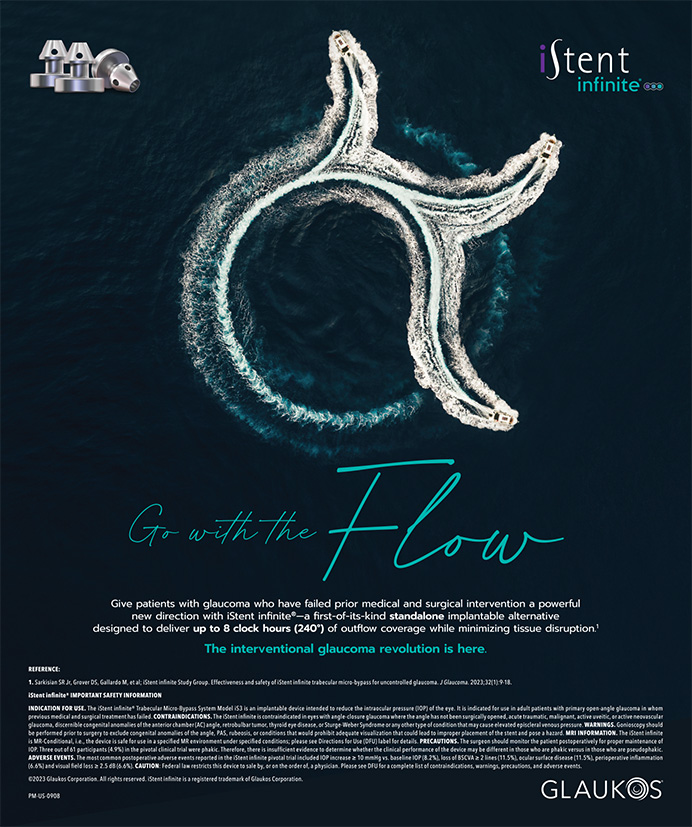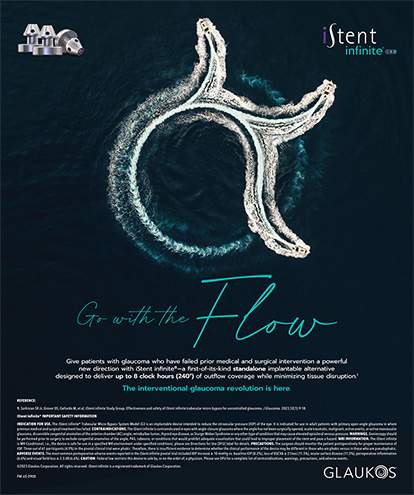Patients' satisfaction is often linked to their expectations. The more patients feel like they understand their choices and their physicians' treatment plans, the more likely they are to be content with their medical care and surgical outcome. This is particularly true with premium IOLs for cataract surgery. Patients need to grasp not only what a cataract is, but also the particulars of their individual visual system and how current technologies may or may not work for them. As physicians battle tight schedules, it has become imperative for them to find efficient ways to educate their patients. Videos can play an important part in this effort.
ANIMATED GRAPHICS, CLEAR AND CONCISE
Luma by Eyemaginations, Inc., is the program that my colleagues and I use to educate our patients and staff. All patients scheduled for a cataract consultation watch animated graphics that clearly and concisely explain what a cataract is, what cataract surgery entails, and what the various IOL options are. The innovative video clips simplify otherwise complex topics and facilitate the conversations I have with my patients.
As soon as a patient and I decide to proceed with cataract surgery, I implement various treatment modalities to improve his or her ocular surface and schedule a return visit for preoperative biometry and corneal measurements at least 2 weeks later. This allows time for the patient's ocular surface to improve to ensure optimal measurements. Once the patient schedules his or her A-scan appointment, he or she receives a packet of information, which consists of pamphlets describing various vision-correcting options for distance, intermediate, and near; the Dell lifestyle questionnaire; reading material on limbal relaxing incisions, monovision, and blended vision; and literature on toric and presbyopia-correcting IOLs.
In addition, we e-mail these patients the Eyemagination 3D-Eye Home videos to watch in the privacy of their homes. The videos describe cataracts, cataract surgery with IOL implantation, and IOL options. If the patients do not have e-mail, we e-mail the videos to their adult children. By watching the videos together, family members become engaged in the cataract surgery decision-making process.
DISCUSSION OF IOL OPTIONS
During the biometry appointment, I assess patients' responses to the lifestyle questionnaire and compare them to their preoperative examination results. Because of the education that my patients have received, I am able to quickly focus my discussion on IOL options to achieve the best possible visual outcome for them.
My interaction with patients is not only streamlined but also enhanced; instead of going through the basic anatomy of the eye, what a cataract is, why the cloudy lens has to be removed and replaced with an IOL, I am able to focus my discussion on their invidual needs. Most people learn visually; videos help them far more than my talking for an extra 10 minutes. Instead, I concentrate my discussion on the best options for a customized pairing of their IOL. I review their measurements with them on a large screen and I tame any unrealistic expectations such as never having to wear glasses again. Moreover, I let patients know if they are not candidates for a specific lens and explain the reason.
THE RECOMMENDATION
Based on the patient's overall ocular condition, I always recommend two options. One is the standard monofocal IOL. The second incorporates technologies and/or services that require out-of-pocket expenses for the patient. I never use words like premium or inferior during these discussions. I inform patients that there is no right or wrong choice, just their preference for their eyes. I do not want patients to feel like I am trying to sell them something. They understand we both want the best outcome from their upcoming cataract surgery.
Among my patients eligible for limbal relaxing incisions, 84.42% selected this out-of-pocket option during a 6-month clinical trial period in 2011. Of those eligible for toric IOLs, 63.54% selected this option. Of those eligible for presbyopia-correcting IOLs, 27.68% selected this option. Compared with national averages, these are high conversion rates for premium lenses. I attribute this success, in part, to my patients' having watched the Luma videos and thus being better prepared to make important decisions regarding their implants.
CONCLUSION
A systematic plan for educating patients is integral to the success of my practice. The animated instructional videos and reading materials save me a significant amount of time with my patients. The rate of conversion to outof- pocket products and services increases revenues. More importantly, satisfied patients are the best marketing tool my practice can have.
Cynthia Matossian, MD, is the founder and CEO of Matossian Eye Associates, with offices in Pennsylvania and New Jersey. She acknowledged no financial interest in the product or company mentioned herein. Dr. Matossian may be reached at (800) 708-8800; cmatossian@matossianeye.com.


